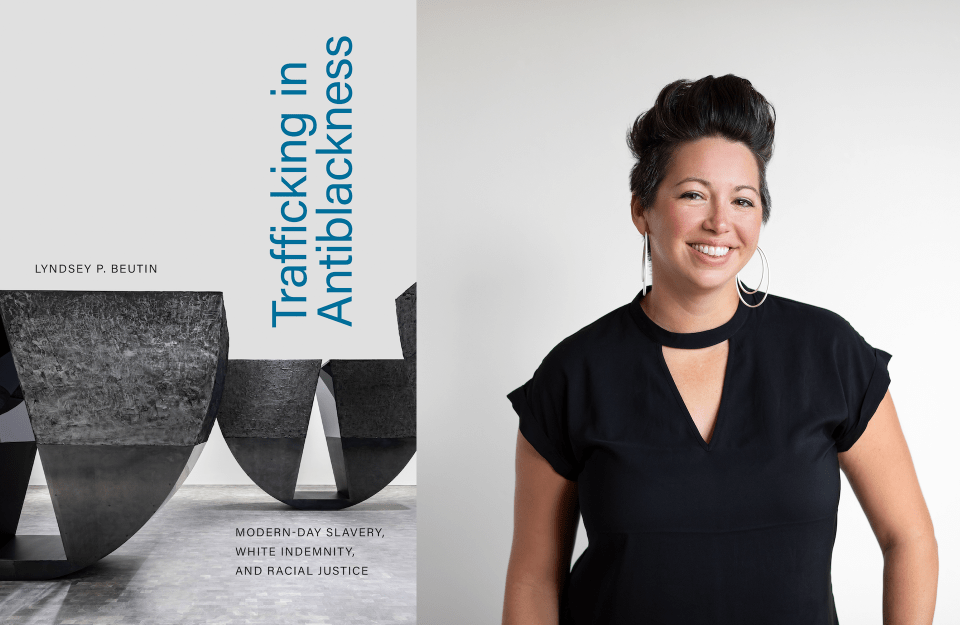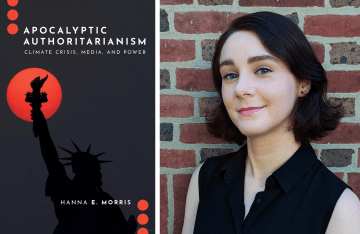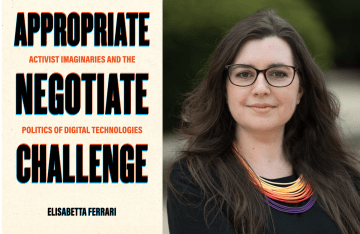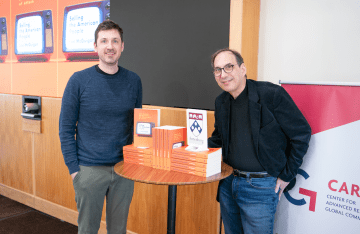Trafficking in Antiblackness: Q&A with Lyndsey Beutin (Ph.D. ‘18)
In her debut book, the McMaster University assistant professor argues that the phrase "modern-day slavery" is a problematic way to discuss human trafficking.

Photo Credit: Rosen-Jones Photography.
Since the 1990s, campaigns to end human trafficking have used the term “modern-day slavery.”
In her new book, Trafficking in Antiblackness: Modern-Day Slavery, White Indemnity, and Racial Justice, Lyndsey Beutin (Ph.D. ‘18), Assistant Professor, Communication Studies & Media Arts at McMaster University, argues that the provocative images, text, and video used in these campaigns — deliberately designed to invoke the memory of the transatlantic slave trade — become tools used to avoid responsibility for the legacy of slavery.
We recently spoke to Beutin about the book, which is now available from Duke University Press:
The book focuses on campaigns to end human trafficking that call trafficking “modern-day slavery.” How did you start to research that?
When I first started seeing the term “modern-day slavery,” I was a new graduate student at Annenberg studying the memory of slavery — how the metaphor of slavery is used in social movements, but more broadly, how the history of transatlantic slavery is remembered in the present.
Something about using this term to describe contemporary migration bothered me, but I wasn’t sure why. For a paper in Barbie Zelizer’s memory class at Annenberg, I analyzed how 19th century imagery of transatlantic slavery was being used in the contemporary campaigns. I quickly realized that NGOs trying to end human trafficking were doing so in counter-productive ways — generally trying to restrict migrant mobility, trying to close borders, and trying to criminalize sex work.
The subtitle of your book is “Modern-Day Slavery, White Indemnity, and Racial Justice.” What do you mean by that?
These organizations and campaigns strongly rely on the aesthetics and tropes of transatlantic slavery to suggest that human trafficking is the same or worse than transatlantic slavery. Some of these campaigns use images of models posed in chains or rope.
The case I make in the book is that “modern-day slavery” is not just a poorly chosen term.
These campaigns use the language of “modern-day slavery” to ultimately circumvent historical responsibility for slavery and end up creating what I call in the book a “white indemnity,” a protection against being held liable for the crimes of the past.
To avoid reparations for slavery?
Yes. In fact, the rise of transnational organizing for reparations for slavery in the mid-to-late nineties overlaps with the rise of this “modern-day slavery” language. These two movements were happening in the same political spheres — primarily in the UN — at the same time.
Whether it's a coincidence or not, the language of “modern-day slavery” works to give former slaving nations a new slavery that they can say they're working to abolish.
They can say, ‘Why are we talking about the slavery of the past when we have slavery in the present?’
The last part of the subtitle is “Racial Justice.” How does that factor into antitrafficking campaigns?
When I started this project, a lot of advocates said “modern-day slavery” has nothing to do with race. As in, ‘Race used to be related to slavery, but it isn’t anymore.’
Prior to the June 2020 uprisings in the U.S., these large antitrafficking campaigns rarely talked about racial justice. After George Floyd was killed, these organizations began to position themselves as racial justice organizations — without doing any racial justice work.
They began to change their language, co-opting the language of racial justice, but didn’t change their policies or the status quo.
Some of them even went so far to say things like, ‘We support racial justice because we are trying to end slavery.’
What do you say to someone who says, ‘But they’re just trying to help’?
I hear this a lot, actually. Audiences often say, “Well at least they are raising awareness.” I resist this framing. What I show in the book is that the antitrafficking industry has constructed issues of unsafe migration in ways that promote solutions which ultimately do not make migrants safer, but do protect the interests of U.S. state, corporate, and non-state actors. It is the opposite of help. It is a rhetorical strategy that undermines grassroots organizing for structural solutions to the uneven distribution of resources, mobility, and power globally.



